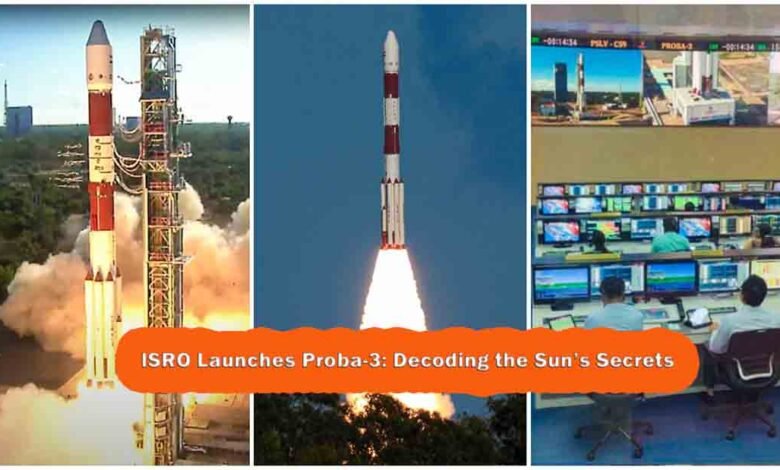
ISRO’s Historic Proba-3 Satellite Launch: A New Era in Solar Exploration
On December 5, 2024, the Indian Space Research Organisation (ISRO) marked another historic milestone by successfully launching the Proba-3 satellite for the European Space Agency (ESA). The mission, which aims to unlock the mysteries of the Sun, was launched from the Satish Dhawan Space Center in Sriharikota, Andhra Pradesh, at precisely 4:04 PM.
A Delay Turned into Triumph
Originally scheduled for December 4, 2024, the launch was postponed due to a technical fault in the Proba-3 spacecraft. However, ISRO quickly resolved the issue, ensuring a flawless liftoff the following day. Using the powerful PSLV-XL rocket, the satellite was placed in its designated orbit just 26 minutes after liftoff, showcasing ISRO’s world-class precision and expertise.
What is the Proba-3 Mission?
The Proba-3 mission is a groundbreaking initiative by the European Space Agency (ESA), developed in collaboration with several European nations, including Spain, Poland, Belgium, Italy, and Switzerland. The project has an estimated budget of €200 million and is designed to operate for two years.
The mission’s unique feature is its revolutionary “Precision Formation Flying” technology, which involves two satellites flying in perfect alignment to function as a single instrument. These satellites—Coronagraph and Occulter—will maintain a static structure in space, enabling them to study the Sun’s corona with unprecedented accuracy.
Why Study the Sun’s Corona?
The corona, the Sun’s outer atmosphere, is hotter than its surface and holds crucial clues about solar phenomena like solar winds and coronal mass ejections (CMEs). The Proba-3 mission will specifically examine the black gap between the high and low corona, a region previously unexplored in detail.
Using the ASPICS instrument, the satellite will study:
- The truss black gaps.
- Solar wind behavior.
- Coronal mass ejections (CMEs).
This research will enhance our understanding of space weather and its effects on Earth, aiding scientists in predicting solar activity and its impact on satellite communications, power grids, and other technologies.
Launch Details
- Rocket Used: PSLV-XL, ISRO’s most powerful launch vehicle.
- Launch Site: Launch Pad 1, Satish Dhawan Space Center, Sriharikota.
- Payload: Two satellites weighing 550 kg each.
The Proba-3 mission has further cemented ISRO’s reputation as a leading global space agency, capable of executing complex international collaborations.
The Proba-3 mission marks a significant leap forward in space science, setting the stage for future studies of solar phenomena. It also underscores India’s growing prowess in the global space community, as ISRO continues to break barriers and contribute to humanity’s understanding of the universe.




